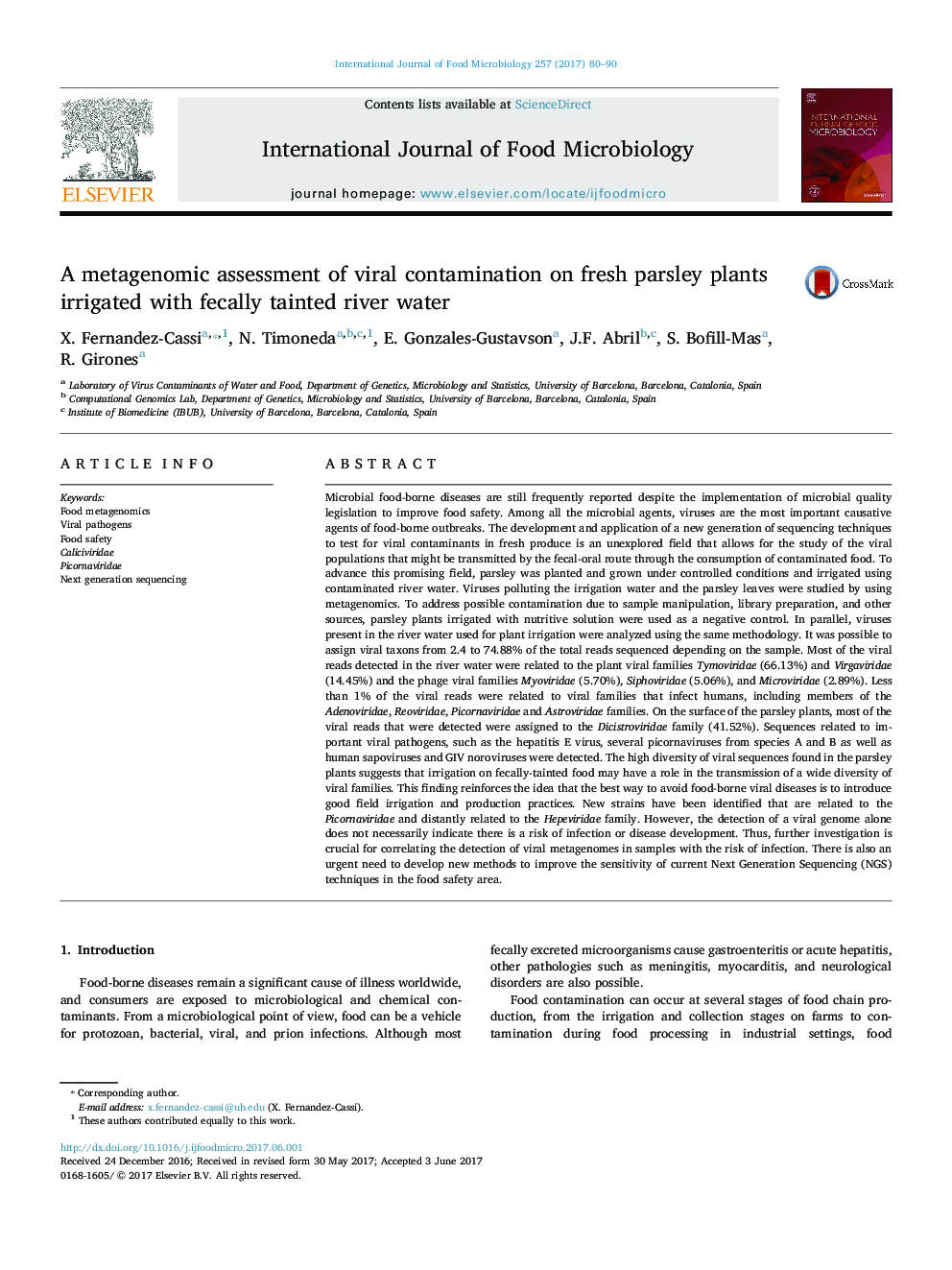| کد مقاله | کد نشریه | سال انتشار | مقاله انگلیسی | نسخه تمام متن |
|---|---|---|---|---|
| 5740659 | 1616526 | 2017 | 11 صفحه PDF | دانلود رایگان |
- A protocol for study of the virome in the surface of vegetables has been described.
- NGS allows the detection of a diversity of RNA and DNA viral pathogens in one assay.
- Pathogenic Picornavirus, Calicivirus and Hepevirus have been detected in parsley.
- New viral strains related to Hepeviridae and Picornaviridae have been detected.
Microbial food-borne diseases are still frequently reported despite the implementation of microbial quality legislation to improve food safety. Among all the microbial agents, viruses are the most important causative agents of food-borne outbreaks. The development and application of a new generation of sequencing techniques to test for viral contaminants in fresh produce is an unexplored field that allows for the study of the viral populations that might be transmitted by the fecal-oral route through the consumption of contaminated food. To advance this promising field, parsley was planted and grown under controlled conditions and irrigated using contaminated river water. Viruses polluting the irrigation water and the parsley leaves were studied by using metagenomics. To address possible contamination due to sample manipulation, library preparation, and other sources, parsley plants irrigated with nutritive solution were used as a negative control. In parallel, viruses present in the river water used for plant irrigation were analyzed using the same methodology. It was possible to assign viral taxons from 2.4 to 74.88% of the total reads sequenced depending on the sample. Most of the viral reads detected in the river water were related to the plant viral families Tymoviridae (66.13%) and Virgaviridae (14.45%) and the phage viral families Myoviridae (5.70%), Siphoviridae (5.06%), and Microviridae (2.89%). Less than 1% of the viral reads were related to viral families that infect humans, including members of the Adenoviridae, Reoviridae, Picornaviridae and Astroviridae families. On the surface of the parsley plants, most of the viral reads that were detected were assigned to the Dicistroviridae family (41.52%). Sequences related to important viral pathogens, such as the hepatitis E virus, several picornaviruses from species A and B as well as human sapoviruses and GIV noroviruses were detected. The high diversity of viral sequences found in the parsley plants suggests that irrigation on fecally-tainted food may have a role in the transmission of a wide diversity of viral families. This finding reinforces the idea that the best way to avoid food-borne viral diseases is to introduce good field irrigation and production practices. New strains have been identified that are related to the Picornaviridae and distantly related to the Hepeviridae family. However, the detection of a viral genome alone does not necessarily indicate there is a risk of infection or disease development. Thus, further investigation is crucial for correlating the detection of viral metagenomes in samples with the risk of infection. There is also an urgent need to develop new methods to improve the sensitivity of current Next Generation Sequencing (NGS) techniques in the food safety area.
Journal: International Journal of Food Microbiology - Volume 257, 18 September 2017, Pages 80-90
